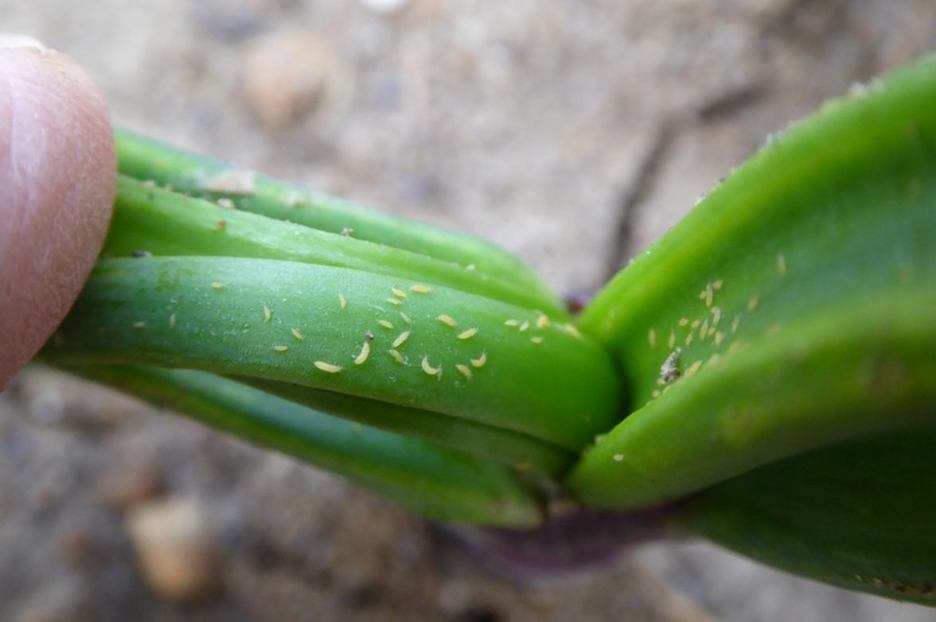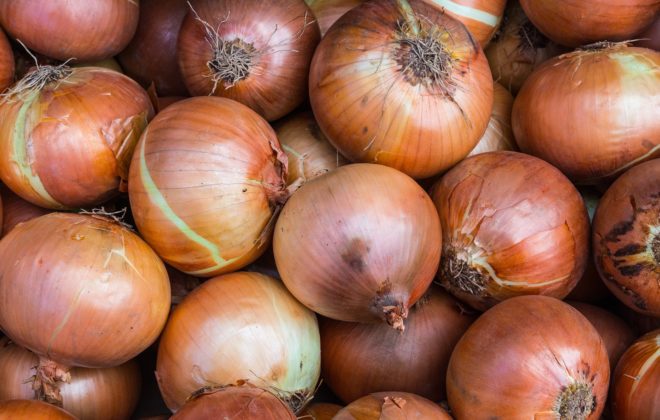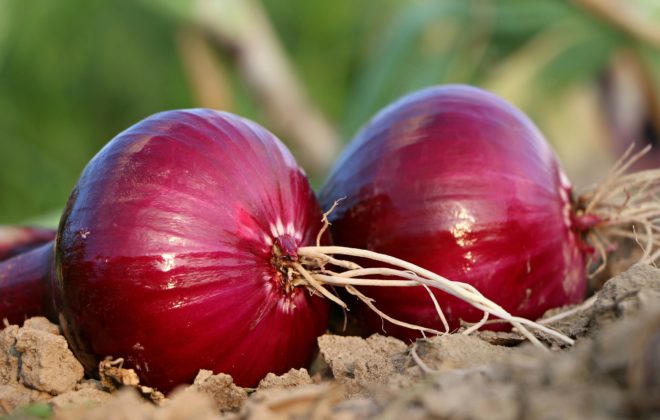Thrip Management
Warmer weather can sometimes bring unwanted pests in the garden. Thrips are the most damaging insects to the leaves of onions. They thrive when conditions are hot and dry. Cool weather slows their development, and heavy rain or overhead irrigation can significantly lower the population. They feed on the leaves of the onion plant causing the leaves to turn white.
Heavy infestation causes significant damage that results in a reduction of photosynthetic area and the foliage will not be able to produce as much carbohydrates to be transferred to the bulbs. This will impact bulb size and quality. Adult females lay eggs in the plant tissue and the larvae collect under the folds of onion leaves or in the densely packed area where the leaves emerge from the neck of the bulb.

By tilling in plant tissue in the area that you are going to plant onions you can help reduce the overwintering hosts for the thrips. If the number of thrip larvae exceed 5 for sweet varieties and 15 for storage varieties, then an insecticide will need to be applied. The difference is that sweet varieties have more tender vegetation than storage varieties and thrips will do more damage. Neem oil is the organic pesticide or a synthetic pesticide containing spinosad is most effective.
To see our selection of onion plants available or place your orders, visit our Web site. You may also contact Customer Service at (830) 876-2430 or email customerservice@dixondalefarms.com. We look forward to another of providing the highest quality onion plants for you.




